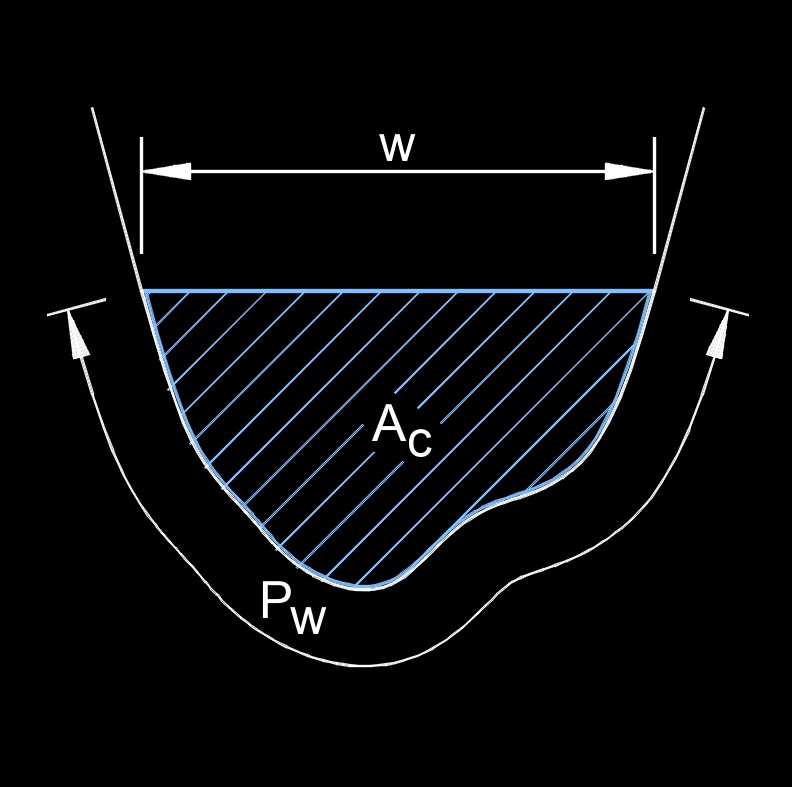Hydraulic Depth
Hydraulic Depth Formula |
||
|
\( d_h \;=\; \dfrac{ A_c }{ P_w }\) (Hydraulic Depth) \( A_c \;=\; d_h \cdot P_w \) \( P_w \;=\; \dfrac{ A_c }{ d_h }\) |
||
| Symbol | English | Metric |
| \( d_h \) = Hydraulic Depth | \( ft \) | \( m \) |
| \( A_c \) = Flow Area Cross-section | \( ft^2 \) | \( m^2 \) |
| \( P_w \) = Channel Wetting Perimeter | \( ft \) | \( m \) |
 Hydraulic depth, abbreviated as \(d_h\), also called hydraulic mean depth, is the area cross-section of water in a pipe or channel divided by the wetting perimeter. The hydraulic depth is directly proportional to the cross-sectional area of flow and inversely proportional to the wetted perimeter of the channel. A higher hydraulic depth indicates a more efficient flow, as a larger cross-sectional area relative to the wetted perimeter reduces the energy loss due to friction. Hydraulic depth is commonly used in the design and analysis of open channel flow systems, such as rivers, canals, and irrigation ditches.
Hydraulic depth, abbreviated as \(d_h\), also called hydraulic mean depth, is the area cross-section of water in a pipe or channel divided by the wetting perimeter. The hydraulic depth is directly proportional to the cross-sectional area of flow and inversely proportional to the wetted perimeter of the channel. A higher hydraulic depth indicates a more efficient flow, as a larger cross-sectional area relative to the wetted perimeter reduces the energy loss due to friction. Hydraulic depth is commonly used in the design and analysis of open channel flow systems, such as rivers, canals, and irrigation ditches.

